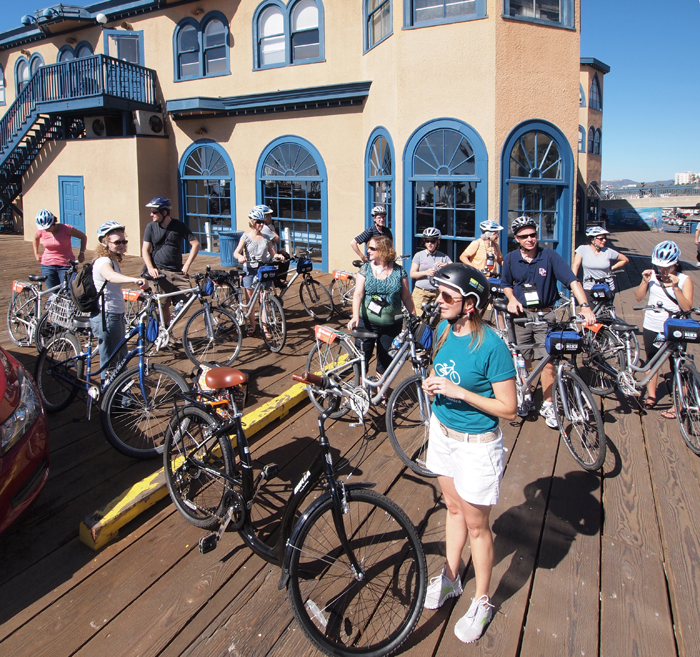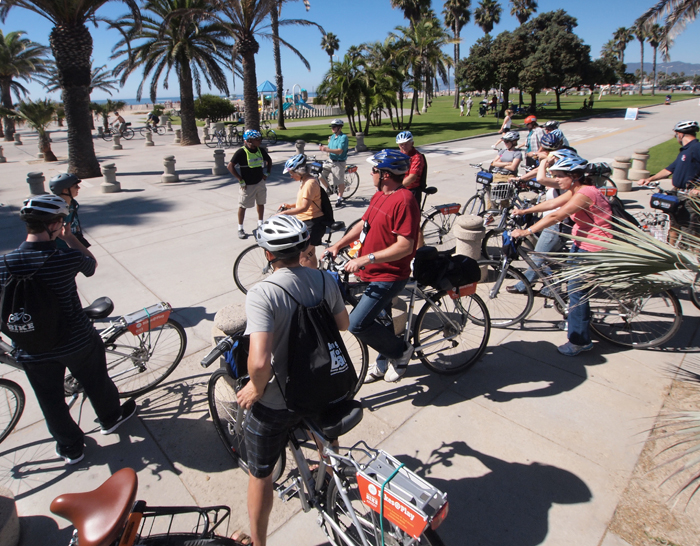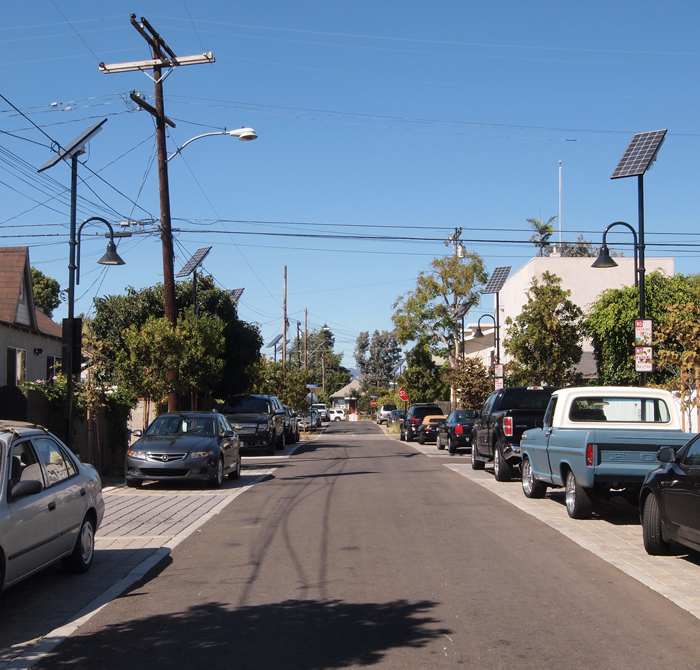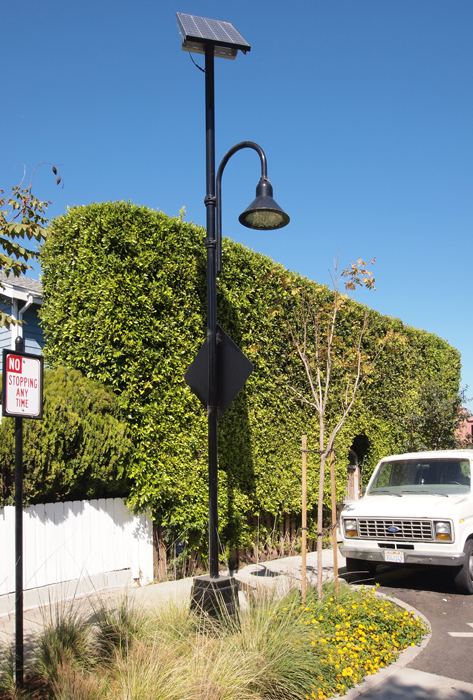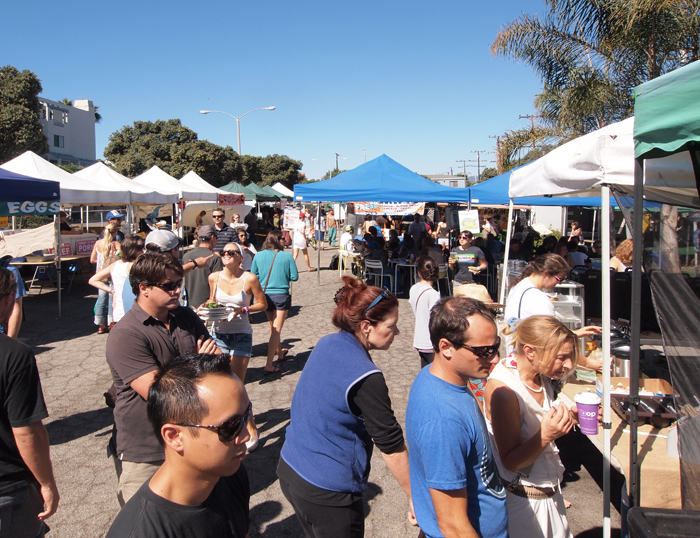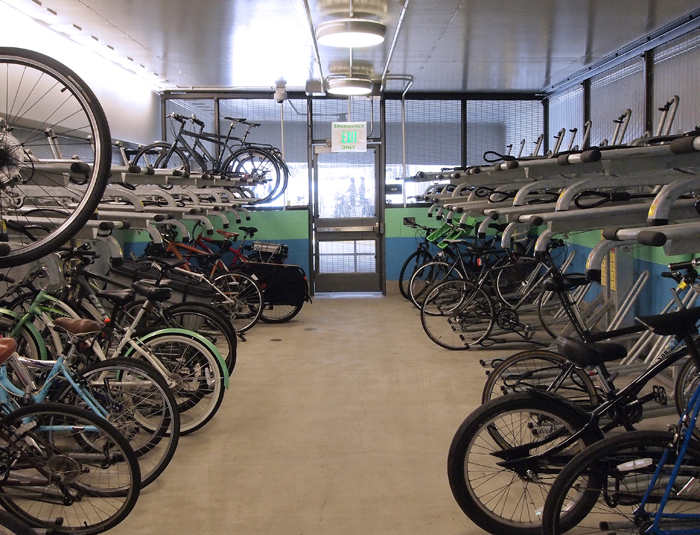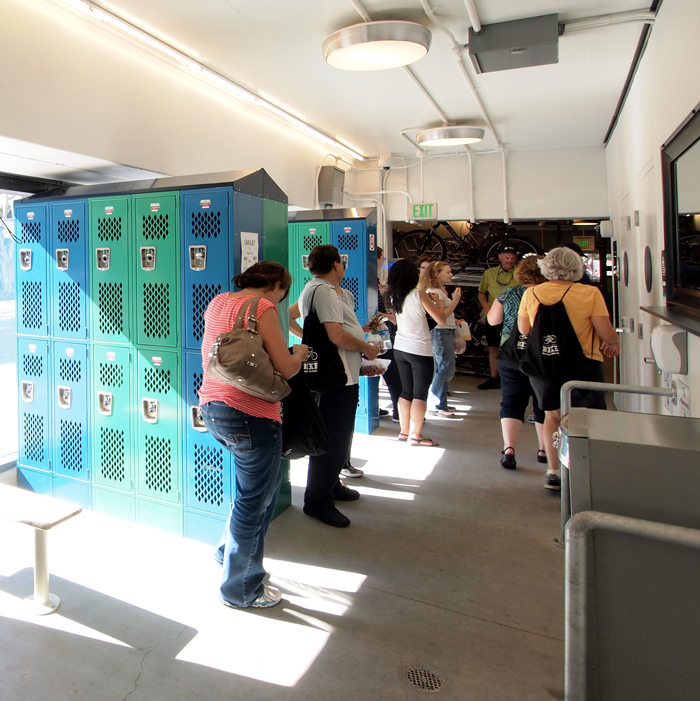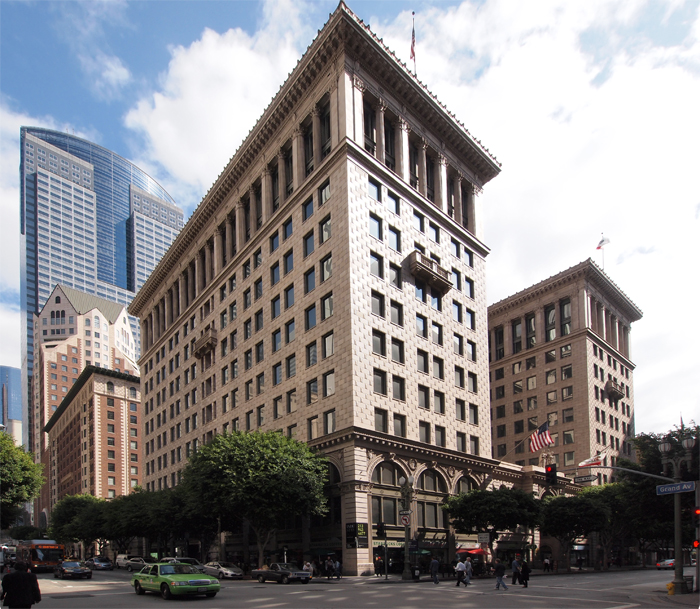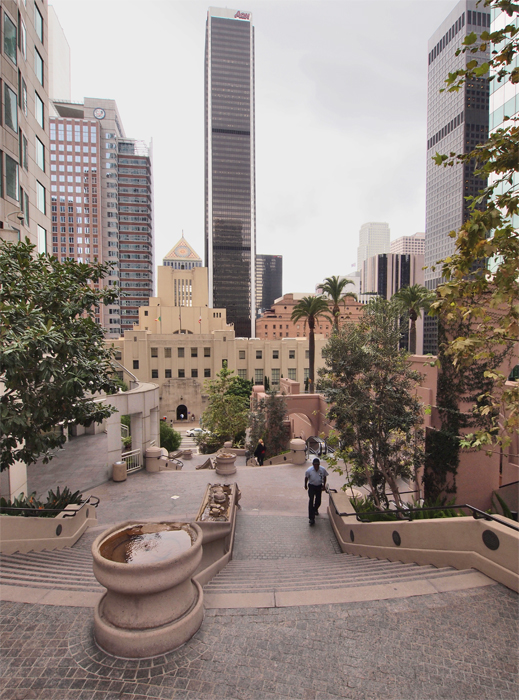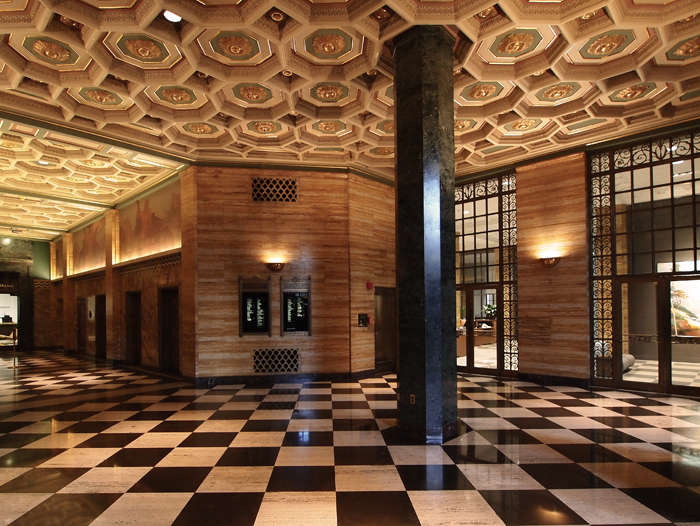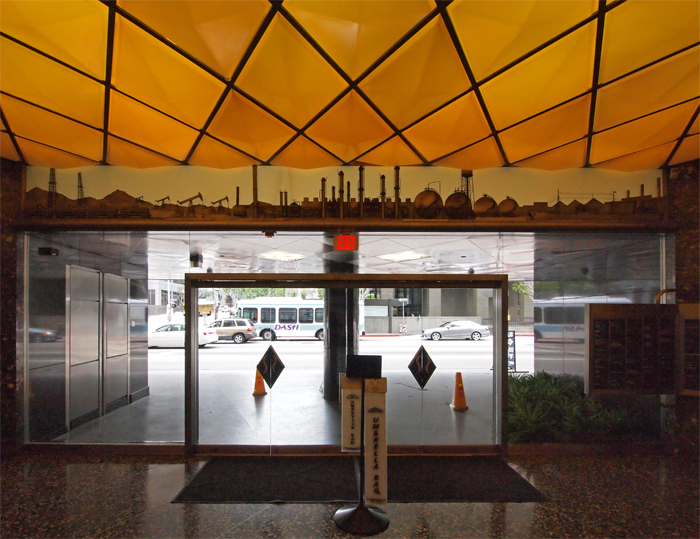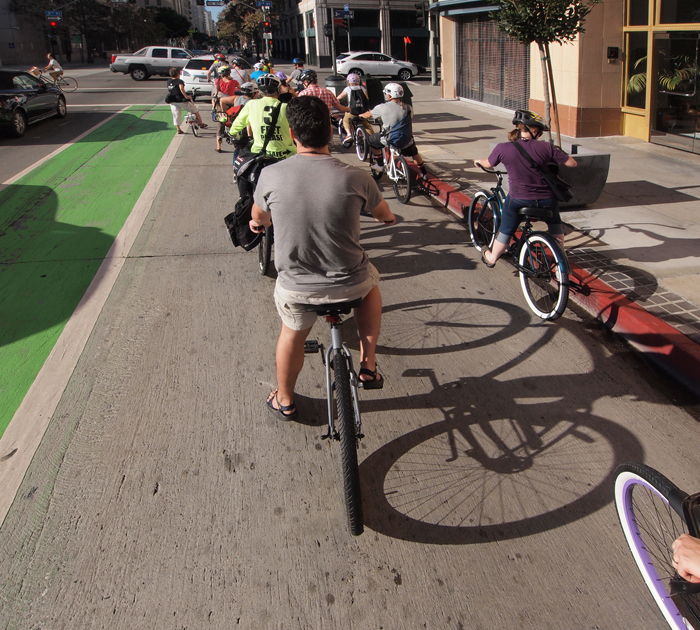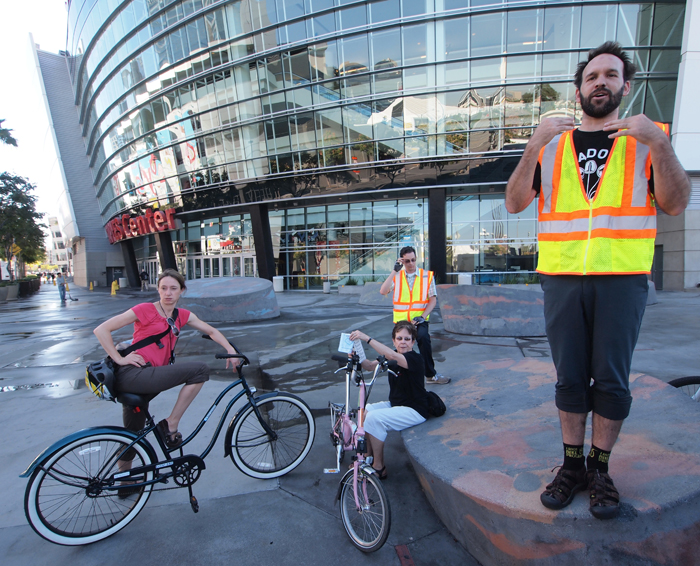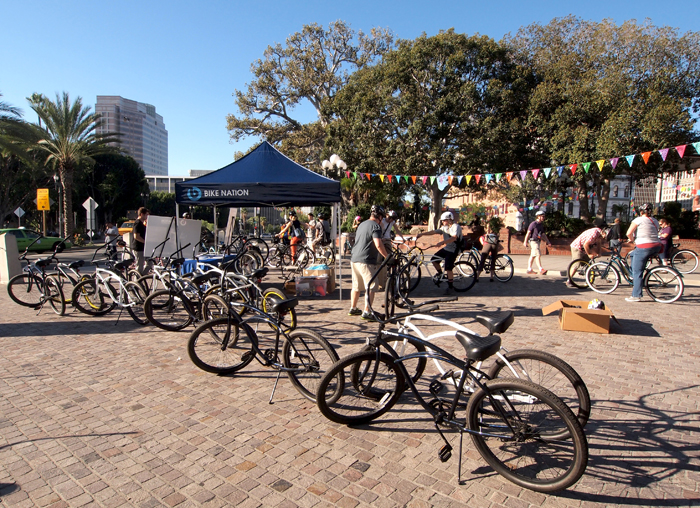 Rail-Volution is a national transit -- and by default -- urban livability conference that was conceived in Portland, Oregon during the 1990s. Initially focused on transit and how transit can lead to more compact and sustainable development, Rail-Volution has expanded into what must be one of the most diverse urban livability get-togethers in the nation. And naturally, bicycle transportation is figuring more prominently every year. A cycling enthusiast myself, I seized the opportunity to join two (of at least four or five) mobile workshops centered on bicycle transit, and its current and future prospects in Southern California.
Rail-Volution is a national transit -- and by default -- urban livability conference that was conceived in Portland, Oregon during the 1990s. Initially focused on transit and how transit can lead to more compact and sustainable development, Rail-Volution has expanded into what must be one of the most diverse urban livability get-togethers in the nation. And naturally, bicycle transportation is figuring more prominently every year. A cycling enthusiast myself, I seized the opportunity to join two (of at least four or five) mobile workshops centered on bicycle transit, and its current and future prospects in Southern California.
The first tour was in Santa Monica, and featured a taxing ride along the Santa Monica Pier and the beach promenade. Our docents included folks from the city, as well a local bicycle advocacy group -- all who voiced great optimism and support for the integration between bikes and transit both currently and in the future.
Along the Santa Monica beach, the city has built a skills course, pictured above. If you look to the upper right of the image, you can see painted lines, replicating those one would ordinarily find riding on the street, but presented here in safe, car-free environment where beginning cyclists can comfortably practice the skills required to ride in traffic. The skills course, which was several hundred yards long and maybe a dozen wide, also had cones and painted, maze-like lines, where one could test and improve one’s stopping and handling abilities. Our docents told as that the skills course was requested by the community, and has been a huge success with those who have utilized it saying that it gave them the courage to ride in traffic, and ultimately leading to a significant increase in new bike commuters. What a brilliant idea.
The well-organized tour also included other infrastructure enhancements that not only encourage cycling, but achieve other sustainable goals Santa Monica has. Pictured above is what we were told was the world's (well, at least California’s) first living street. Features included a woonerf styled profile, where all uses -- including pedestrians, cars, and bikes, share the same, curb-less plane. Parking was over sand set- porous pavers, and the asphalt itself was porous. The three block, formally crime ridden street was built a few years back, and since its completion has been a centerpiece of the neighborhood's revitalization. A particularly nifty feature were the solar-powered street lamps, shown below surrounded by native, drought tolerant plantings that help treat road run-off using with phytoremediation. Also note the typical street signs whose dignity is raise at least a notch or two by steel frames, painted to match the street lights.
And (I suppose) what would be a sustainability-themed bike tour without a farmer’s market. Indeed. The group enjoyed a great lunch at Santa Monica's, which had bike parking for what seemed to be hundreds of bicycles; a welcoming sign, to be sure.
Our tour concluded at the Santa Monica Bike Center in the heart of downtown. A private enterprise, the Center rents bikes and sells bike schwag. Germane to our tour, the Bike Center also has a subscription-based bicycle storage facility, showers, and locker rooms. In the near future, they plan on also being a bike-share location. A great combination of services as well as a model for other aspiring communities, as the profits from the bike rentals offset the lack of profits from the bike storage and showers, allowing for the assemblage to actually turn a profit and have the proprietors not only consider an expanding, but to open other locations as well. Just look as those sexy Saris double-decker racks in the storage room.
Another day found me on a bike tour of downtown Los Angeles. Contrary to popular opinion (including my own), downtown has a rapidly emerging downtown scene, with an intensity and density that was surprising and sure to match or even exceed my beloved Seattle's in only a short time. And it is not only about the new; in fact, what impressed me most about downtown LA (which is where I stayed for the conference, instead of at the conference hotel in Hollywood), was the legacy of outstanding buildings be they 50, 60, or even 100 years old; so much for the myth of LA being only a post-war, automobile oriented city. Give it a decade or so, and LA will be one of our nation’s hippest down-towns to live in. Please allow me to digress a bit, and share a few images of some pre-war, pre-freeway images of downtown that I had a chance to take prior to the conference, that merely hint at downtown’s urbanity.
Especially rewarding were to explore were the many pre-war office building lobbies, the design and materiality of which speak to Los Angles’ industrial and corporate might during the early 20th century (and to this day). I absolutely love the profile of the chemical plant above the entry doors to the former Standard Oil (Exxon, in today's parlance) lobby, which has been repurposed into the tres hip Standard Hotel.
End of digression -- back to the bike tour. Though nascent, LA's bike program is off to a robust start, and reflects California's entrepreneurial spirit. On Spring Street, pictured below, one can see one of LA's test, green painted bike lanes. Still in the vetting stage, we rode on several surfaces that LADOT is evaluating for performance. Just look at the width of that lane -- a full 6 feet as I recall. And one would never guess, but there was barely and outcry, or so said the docents, when a parking lane was removed for its creation. Although I don't recall from what low, bike commuting has increased 200% in total numbers and 600% among women since the lanes were debuted.
Discussion along the way included the late 2012 launch of LA's bike share program, which will begin downtown and feature bike frames made of 100% recycled aluminum. As we meandered our way on bike lanes, soon to be bike boulevards, and other such inspired bike infrastructure I could not but think how impressed I was with the speed, social acceptance, and political will required to execute such ambitions in a city as large -- and auto-oriented -- as Los Angles. While it is true that the weather is simply superb for cycling, and the terrain a bit more hospitable on the whole than say Seattle's is, if a city such as Los Angeles can vision and implement a bike program with such speed and alacrity it speaks well to the movement as whole.

